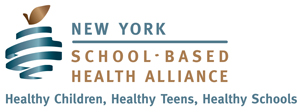Academic Success
SBHCs provide an optimal setting to foster learning readiness and academic achievement while giving children the resources they need to improve their health.
Poor academic outcomes and high dropout rates are major concerns of educators, policy makers, and parents alike – and poor health severely limits a child’s motivation and ability to learn. Recent research confirms that health disparities affect educational achievement.1 Improving students’ health is integral to education reform.
Why School-Based Health Centers?
School-Based Health Centers (SBHCs) — the convergence of public health, primary care, and mental health— provide an optimal setting to foster learning readiness and academic achievement while giving children the resources they need to improve their health.
The Facts:
- High school SBHC users in one 2000 study had a 50% decrease in absenteeism and 25% decrease in tardiness two months after receiving school-based mental health and counseling.2
- A study of SBHC users in Seattle found that those who use the clinic for medical purposes had a significant increase in attendance over nonusers.3
- A 2007 study found that SBHC users for mental health purposes increased their Grade Point Averages over time compared to nonusers.3
- African-American male SBHC users were three times more likely to stay in school than their peers who did not use the SBHC.4
- Students, teachers, and parents who have a SBHC rated academic expectations, school engagement, and safety and respect significantly higher than in schools without a SBHC.5
- SBHCs in The Bronx, NY reduced hospitalization and increased school attendance among school children with asthma.6
- A quasi-experimental study in New York observed that students not enrolled in a SBHC lost three times as much seat time as students enrolled in a SBHC.7
Click Here to Download the School-Based Health Centers and Academic Success PDF
1. Basch CE. Healthier Students Are Better Learners: A Missing Link in School Reforms to Close the Achievement Gap. 2010.
2. Gall G, Pagano ME, Desmond MS, Perrin JM, Murphy JM. Utility of Psychosocial Screening at a School-Based Health Center. Journal of School Health. Sep 2000;70(7):292-298.
3. Walker SC, Kerns SE, Lyon AR, Bruns EJ, Cosgrove TJ. Impact of School-Based Health Center Use on Academic Outcomes. The Journal of adolescent health : official publication of the Society for Adolescent Medicine. Mar 2010;46(3):251-257.
4. McCord MT, Klein JD, Foy JM, Fothergill K. School-Based Clinic Use and School Performance. Journal of Adolescent Health. 1993;14(2):91-98.
5. Strolin-Goltzman J. The Relationship Between School-Based Health Centers and the Learning Environment. Journal of School Health. 2010;80(3):153-159.
6. Webber MP, Carpiniello KE, Oruwariye T, Lo Y, Burton WB, Appel DK. Burden of Asthma in Inner-City Elementary Schoolchildren: Do School-Based Health Centers Make a Difference? Archives of pediatrics & adolescent medicine. Feb 2003;157(2):125-129.
7. Van Cura M. The Relationship Between School-Based Health Centers, Rates of Early Dismissal from School, and Loss of Seat Time. J Sch Health. 2010;80(8):371-377.
Become a Member
Regular member communications, advocacy updates, alerts & webinars are only some of what you receive as a NYSBHA member
Donate
Your donation plays an essential role in the Alliance’s ability to achieve its vision of "Healthy Children, Healthy Teens, and Healthy Schools."
Contact Us
Get in touch with NYSBHA
